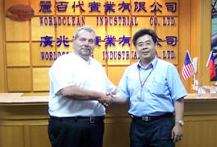
Curated with aloha by
Ted Mooney, P.E. RET

The authoritative public forum
for Metal Finishing 1989-2025

-----
Antimony in Lead Cathodes for Type 2 sulfuric acid anodizing
Q. I need to use long rods of lead in a type 2 sulfuric anodizing process. Pure lead will be too soft and will bend in this situation. I am contemplating using lead cathodes that are hardened with 6% Antimony. Will the Antimony affect the anodizing process? Will I need to clean the lead anodes more if they are hardened with Antimony? Any help would be appreciated.
Mark
- Federal Way, Washington
December 28, 2021
Ed. note: This RFQ is outdated, but technical replies are welcome, and readers are encouraged to post their own RFQs. But no public commercial suggestions please ( huh? why?).
A. The most efficient material to use as cathodes is aluminum. The correct alloy to use for conductivity and longevity is 6063T6

Drew Nosti, CEF
Anodize USA
Ladson, South Carolina

December 30, 2021
Q, A, or Comment on THIS thread -or- Start a NEW Thread
